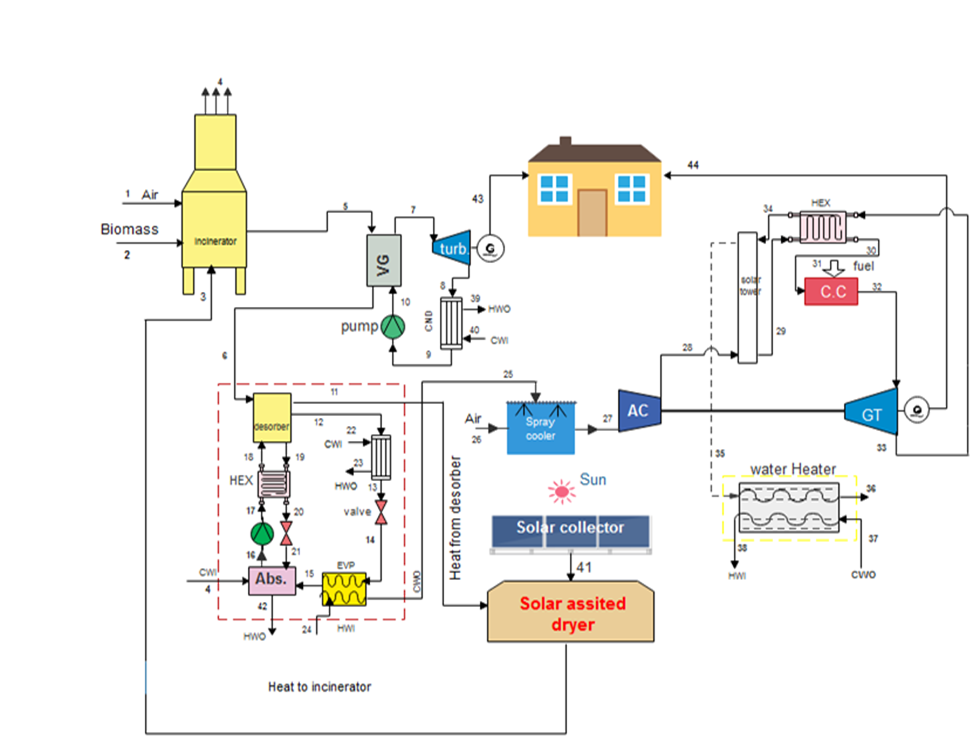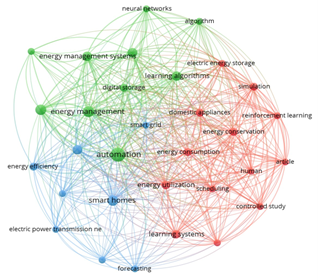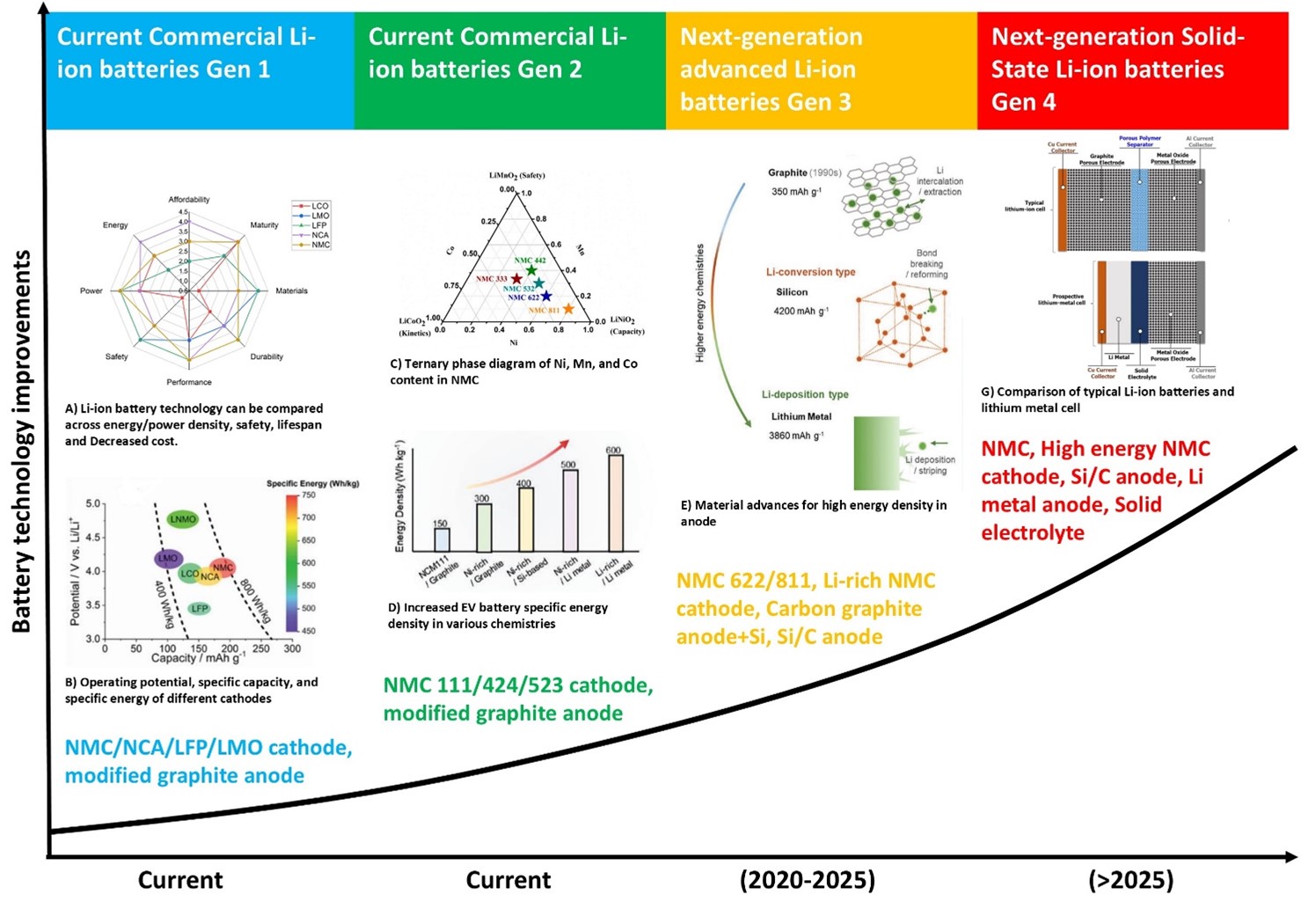Simulation and analysis of energy consumption in all types of residential complexes and choosing the best form from the perspective of sustainability

Downloads
Energy demand in residential buildings is growing with the immigration of people to urban areas. This study simulates and analyses five different types of residential buildings. The possibility of using a solar thermal system is studied, and then five choices are ranked with the PSI method, which is a mathematical approach. For HVAC simulations, Design builder software, and solar simulations, T*Sol software is used. The results show that in terms of heating load, towers and skyscraper types of residential buildings demand more energy, with 3.67 MW and 3.62 MW, respectively. In terms of cooling, towers and surrounding types need bigger values than others, with 1.84 MW and 1.82 MW, respectively. Solar simulations indicate that the highest solar fraction with no area limitations belongs to the sky scrapper type with 26.9 percent, while collector efficiencies of all types are between 9.9 and 11.6 percent. However, with rooftop areas in each type, the highest solar fraction belongs to linear and surround types both with 24.6 percent. Mathematical analysis shows that by taking into account the importance of heating load and solar fraction for all types, the best form of residential buildings to use is a mixed type with the first rank.
Cohen, J.E., Population growth and earth's human carrying capacity. Science, 1995. 269(5222): p. 341-346.
Cajot, S., et al., Energy planning in the urban context: challenges and perspectives. Energy Procedia, 2015. 78: p. 3366-3371.
Pérez-Lombard, L., J. Ortiz, and C. Pout, A review on buildings energy consumption information. Energy and buildings, 2008. 40(3): p. 394-398.
Ratti, C., N. Baker, and K. Steemers, Energy consumption and urban texture. Energy and buildings, 2005. 37(7): p. 762-776.
Creutzig, F., et al., Global typology of urban energy use and potentials for an urbanization mitigation wedge. Proceedings of the national academy of sciences, 2015. 112(20): p. 6283-6288.
Johari, F., et al., Urban building energy modeling: State of the art and future prospects. Renewable and Sustainable Energy Reviews, 2020. 128: p. 109902.
Hong, T., et al., Ten questions on urban building energy modeling. Building and Environment, 2020. 168: p. 106508.
Ferrando, M., et al., Urban building energy modeling (UBEM) tools: A state-of-the-art review of bottom-up physics-based approaches. Sustainable Cities and Society, 2020. 62: p. 102408.
Ang, Y.Q., Z.M. Berzolla, and C.F. Reinhart, From concept to application: A review of use cases in urban building energy modeling. Applied Energy, 2020. 279: p. 115738.
Harish, V. and A. Kumar, A review on modeling and simulation of building energy systems. Renewable and sustainable energy reviews, 2016. 56: p. 1272-1292.
Zahedi, R., M. Ayazi, and A. Aslani, Comparison of amine adsorbents and strong hydroxides soluble for direct air CO2 capture by life cycle assessment method. Environmental Technology & Innovation, 2022: p. 102854.
Ebrahimi, M., et al., Investigation of thermal performance and life-cycle assessment of a 3D printed building. Energy and Buildings, 2022: p. 112341.
Zahedi, R., et al., Feasibility study for designing and building a zero-energy house in new cities. Solar Energy, 2022. 240: p. 168-175.
Buker, M.S. and S.B. Riffat, Building integrated solar thermal collectors–A review. Renewable and Sustainable Energy Reviews, 2015. 51: p. 327-346.
Karami, M. and F. Javanmardi, Performance assessment of a solar thermal combisystem in different climate zones. Asian Journal of Civil Engineering, 2020. 21(5): p. 751-762.
Qerimi, D., et al., Modeling of the solar thermal energy use in urban areas. Civil Engineering Journal, 2020. 6(7): p. 1349-1367.
Tang, A., et al., Technical, environmental and ranking analysis of using solar heating: A case study in South Africa. Sustainable Energy Technologies and Assessments, 2022. 52: p. 102299.
Abdelhafez, M.H.H., et al., Integrating Solar Photovoltaics in Residential Buildings: towards zero energy buildings in hail city, ksa. Sustainability, 2021. 13(4): p. 1845.
Cheshankov, B., et al. PSI-method multi-criteria optimization contracting the set of trade-off solutions. in 15th International Conference on Systems Science, Wroclaw, Poland. 2004.
Wang, Q., et al., Does urbanization lead to less residential energy consumption? A comparative study of 136 countries. Energy, 2020. 202: p. 117765.
Bahgat, R., R.M. Reffat, and S.L. Elkady, Energy efficiency design guide for optimal urban features of open spaces in residential complexes. The Academic Research Community publication, 2019. 3(1): p. 136-152.
Reinhart, C.F. and C.C. Davila, Urban building energy modeling–A review of a nascent field. Building and Environment, 2016. 97: p. 196-202.
Franco, S., V.R. Mandla, and K.R.M. Rao, Urbanization, energy consumption and emissions in the Indian context A review. Renewable and Sustainable Energy Reviews, 2017. 71: p. 898-907.
Hachem, C., A. Athienitis, and P. Fazio, Energy performance enhancement in multistory residential buildings. Applied Energy, 2014. 116: p. 9-19.
Choi, I.Y., S.H. Cho, and J.T. Kim, Energy consumption characteristics of high-rise apartment buildings according to building shape and mixed-use development. Energy and Buildings, 2012. 46: p. 123-131.
Tereci, A., S.T.E. Ozkan, and U. Eicker, Energy benchmarking for residential buildings. Energy and Buildings, 2013. 60: p. 92-99.
Dorer, V., et al., Modelling the urban microclimate and its impact on the energy demand of buildings and building clusters. Proceedings of BS, 2013. 2013: p. 3483-3489.
Hong, B. and B. Lin, Numerical studies of the outdoor wind environment and thermal comfort at pedestrian level in housing blocks with different building layout patterns and trees arrangement. Renewable Energy, 2015. 73: p. 18-27.
Faizi, F., et al., Design an optimum pattern of orientation in residential complexes by analyzing the level of energy consumption (case study: Maskan Mehr Complexes, Tehran, Iran). Procedia engineering, 2011. 21: p. 1179-1187.
Ma, Z., H. Bao, and A.P. Roskilly, Feasibility study of seasonal solar thermal energy storage in domestic dwellings in the UK. Solar Energy, 2018. 162: p. 489-499.
Kalogirou, S.A., Solar energy engineering: processes and systems. 2013: Academic press.
ISBN: 9780123972705
Maniya, K. and M.G. Bhatt, A selection of material using a novel type decision-making method: Preference selection index method. Materials & Design, 2010. 31(4): p. 1785-1789.















